Ten Famous Intellectual Property Disputes
From Barbie to cereal to a tattoo, a copyright lawsuit can get contentious; some have even reached the Supreme Court
/https://tf-cmsv2-smithsonianmag-media.s3.amazonaws.com/filer/Intellectual-Property-Disputes-The-Hangover-631.jpg)
1. S. Victor Whitmill v. Warner Bros. Entertainment Inc.
In the recent movie The Hangover Part II, Stu Price, a strait-laced dentist played by actor Ed Helms, wakes up after a night of debauchery in Bangkok to find a tribal tattoo wrapped around his left eye, his skin still painfully pink. Price’s tattoo is identical to the one Mike Tyson has, and it alludes to the boxer’s cameo in the original 2009 movie The Hangover.
Tyson’s tattoo artist S. Victor Whitmill filed a lawsuit against Warner Bros. Entertainment on April 28, just weeks before the movie’s May 26 opening. Since he obtained a copyright for the eight-year-old “artwork on 3-D” on April 19, he claimed that the use of his design in the movie and in advertisements without his consent was copyright infringement. Warner Bros., of course, saw it as a parody falling under “fair use.”
On May 24, 2011 Chief Judge Catherine D. Perry of the United States District Court for the Eastern District of Missouri denied an injunction on the movie’s release, but said Whitmill still had a case. If it meant avoiding a long trial, Warner Bros. said, in early June, that it would be willing to “digitally alter the film to substitute a different tattoo on Ed Helms’s face” when the movie is released on home video. But that ending was avoided on June 17, when Warner Bros. and Whitmill hashed out an agreement of undisclosed terms.
2. Isaac Newton v. Gottfried Wilhelm Leibniz
By the early 18th century, many credited the German mathematician and philosopher Gottfried Wilhelm Leibniz with inventing the study of calculus. Leibniz had, after all, been the first to publish papers on the topic in 1684 and 1686. But when Englishman Isaac Newton published a book called Opticks in 1704, in which he asserted himself as the father of calculus, a debate arose. Each of the thinkers’ respective countries wanted to stake a claim in what was one of the biggest advances in mathematics.
Newton claimed to have thought up the “science of fluxions,” as he called it, first. He apparently wrote about the branch of mathematics in 1665 and 1666, but only shared his work with a few colleagues. As the battle between the two intellectuals heated up, Newton accused Leibniz of plagiarizing one of these early circulating drafts. But Leibniz died in 1716 before anything was settled. Today, however, historians accept that Newton and Leibniz were co-inventors, having come to the idea independently of each other.
3. Kellogg Co. v. National Biscuit Co.
In 1893, a man named Henry Perky began making a pillow-shaped cereal he called Shredded Whole Wheat. John Harvey Kellogg said that eating the cereal was like “eating a whisk broom,” and critics at the World Fair in Chicago in 1893 called it “shredded doormat.” But the product surprisingly took off. After Perky died in 1908 and his two patents, on the biscuits and the machinery that made them, expired in 1912, the Kellogg Company, then whistling a different tune, began selling a similar cereal. In 1930, the National Biscuit Company, a successor of Perky’s company, filed a lawsuit against the Kellogg Company, arguing that the new shredded wheat was a trademark violation and unfair competition. Kellogg, in turn, viewed the suit as an attempt on National Biscuit Company’s part to monopolize the shredded wheat market. In 1938, the case was brought to the Supreme Court, which ruled in favor of the Kellogg Company on the grounds that the term “shredded wheat” was not trademarkable, and its pillow shape was functional and therefore able to be copied after the patent had expired.
4. Marcantonio Raimondi v. Albrecht Dürer
Artist Albrecht Dürer discovered in the early 1500s that a fellow engraver by the name of Marcantonio Raimondi was copying one of his most famous works, a woodcut series of engravings called the Life of the Virgin. To make his prints, Raimondi carved detailed replicas of Dürer’s wood blocks. The prints, with Dürer’s “A” above “D” signature, could pass as Dürer originals, and Raimondi made considerable profits off of them. Dürer took issue and brought his case to the court of Venice. Ultimately, the court ruled that Raimondi could continue making copies, as long as he omitted the monogram.
5. Mattel Inc. v. MGA Entertainment Inc.
Barbie was 42 years old when the exotic, puffy-lipped Bratz dolls Cloe, Jade, Sasha and Yasmin strolled onto the scene in 2001. Tensions escalated as the Bratz seized about 40 percent of Barbie’s turf in just five years. The Bratz struck first. In April 2005, their maker MGA Entertainment filed a lawsuit against toy powerhouse Mattel, claiming that the line of “My Scene” Barbies copied the big-headed and slim-bodied physique of Bratz dolls. Mattel then swatted back, accusing Bratz designer Carter Bryant for having designed the doll while on Mattel’s payroll. Bryant worked for Mattel from September 1995 to April 1998 and then again from January 1999 to October 2000, under a contract that stipulated that his designs were the property of Mattel.
In July 2008, a jury ruled in favor of Mattel, forcing MGA to pay Mattel $100 million and to remove Bratz dolls from shelves (an injunction that lasted about a year). But the two toy companies continued to duke it out. This April, in yet another court case, underdog MGA prevailed, proving that Mattel was actually the one to steal trade secrets.
6. Campbell v. Acuff-Rose Music, Inc.
“Weird Al” Yankovic has a policy of writing a parody of a song only if he gets permission from the artist. In the late 1980s, the rap group 2 Live Crew attempted to play by the same rules. Luther Campbell, one of the group members, changed the refrain of Roy Orbison’s hit “Oh, Pretty Woman” from “pretty woman” to “big hairy woman,” “baldheaded woman” and “two-timin’ woman.” 2 Live Crew’s manager sent the bawdy lyrics and a recording of the song to Acuff-Rose Music Inc., which owned the rights to Orbison’s music, and noted that the group would credit the original song and pay a fee for the ability to riff off of it. Acuff-Rose objected, but 2 Live Crew included the parody, titled “Pretty Woman,” on its 1989 album “As Clean as They Wanna Be” anyway.
Acuff-Rose Music Inc. cried copyright infringement. The case went to the Supreme Court, which, in so many words, said, lighten up. “Parody, or in any event its comment, necessarily springs from recognizable allusion to its object through distorted imitation,” wrote Justice David Souter. “Its art lies in the tension between a known original and its parodic twin.”
7. Michael Baigent and Richard Leigh v. The Random House Group Limited
Authors Michael Baigent and Richard Leigh surfaced in 2004 with claims that Dan Brown had cribbed the “central theme” and “architecture” of their 1982 book The Holy Blood and the Holy Grail. Though Baigent and Leigh’s book was nonfiction and Brown’s The Da Vinci Code was fiction, they both boldly interpret the Holy Grail as being not a chalice but the bloodline of Jesus and Mary Magdalene, who they alleged had a child together.
Baigent and Leigh accused Random House—ironically, their own publisher, as well as Brown’s—for copyright infringement. A London court ruled, in 2006, that historical research (or “historical conjecture,” as was the case with The Holy Blood and the Holy Grail) is fair game for novelists to explore in fiction. “It would be quite wrong if fictional writers were to have their writings pored over in the way The Da Vinci Code has been pored over in this case by authors of pretend historical books to make an allegation of infringement of copyright,” wrote Justice Peter Smith in his decision.
8. Lucasfilm Ltd. v. High Frontier and Lucasfilm v. Committee for a Strong, Peaceful America
When politicians, journalists and scientists, in the mid-1980s, nicknamed the Reagan administration’s Strategic Defensive Initiative (SDI), the “star wars” program, George Lucas’s production company was miffed. It did not want the public’s positive associations with the term to be marred by the controversial plan to place anti-missile weapons in space.
In 1985, Lucasfilm Ltd. filed a lawsuit against High Frontier and the Committee for a Strong, Peaceful America—two public interest groups that referred to SDI as “star wars” in television messages and literature. Though Lucasfilm Ltd. had a trademark for Star Wars, the federal district court ruled in favor of the interest groups and their legal right to the phrasing so long as they didn’t attach it to a product or service for sale. “Since Jonathan Swift’s time, creators of fictional worlds have seen their vocabulary for fantasy appropriated to describe reality,” read the court decision.
9. A&M Records, Inc. v. Napster Inc.
In 1999, to the dismay of musicians around the world looking to sell albums, Shawn Fanning, an 18-year-old whiz kid studying computer science at Northeastern University, created Napster, a peer-to-peer music sharing service that allowed users to download MP3s for free. A&M Records, part of Universal Music Group, a heavy hitter in the music industry, as well as several other record companies affiliated with the Recording Industry Association of America slapped Napster with a lawsuit. The plaintiffs accused Napster of contributory and vicarious copyright infringement. The case went from the United States District Court for the Northern District of California to the United States Court of Appeals for the Ninth Circuit, where Napster was found guilty on both counts. In 2002, Napster was shut down. Grokster, another music-sharing site, surged on for a few more years, but it too stopped operating when the Supreme Court ruled against it in MGM v. Grokster in 2005.
10. Adidas America Inc. v. Payless Shoesource Inc.
In 1994, Adidas and Payless got into a scuffle over stripes. Adidas had used its three-stripe mark as a logo of sorts since 1952, and had recently registered it as a trademark. But Payless was selling confusingly similar athletic shoes with two and four parallel stripes. The two companies hashed out a settlement, but by 2001, Payless was again selling the look-alikes. Fearing that the sneakers would dupe buyers and tarnish its name, Adidas America Inc. demanded a jury trial. The trial lasted seven years, during which 268 pairs of Payless shoes were reviewed. In the end, Adidas was awarded $305 million—$100 million for each stripe, as the Wall Street Journal’s Law Blog calculated.
/https://tf-cmsv2-smithsonianmag-media.s3.amazonaws.com/accounts/headshot/megan.png)
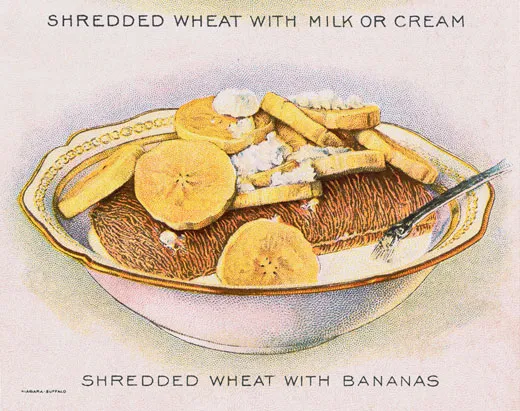

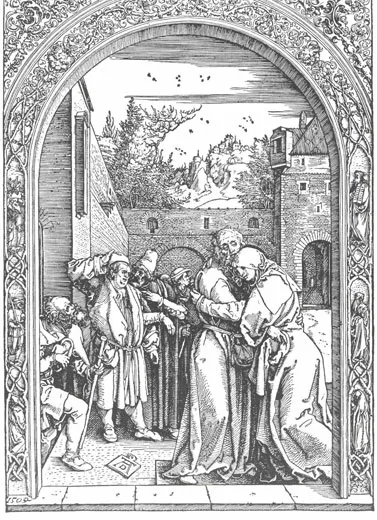
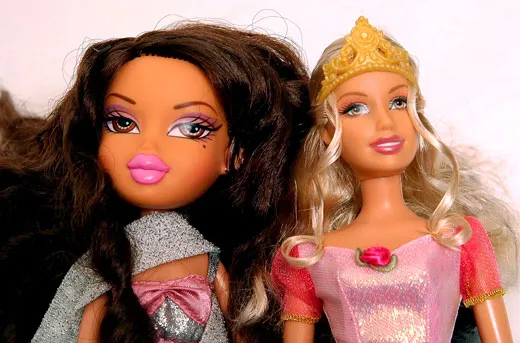
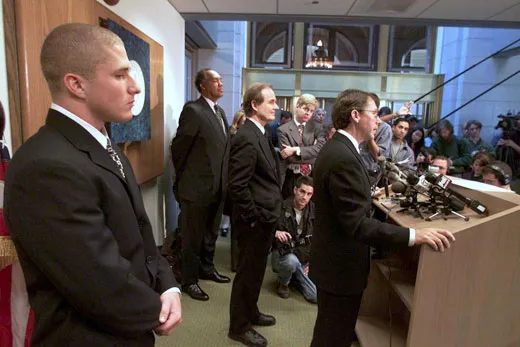
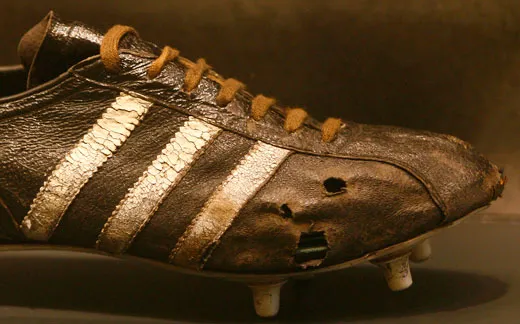
/https://tf-cmsv2-smithsonianmag-media.s3.amazonaws.com/accounts/headshot/megan.png)